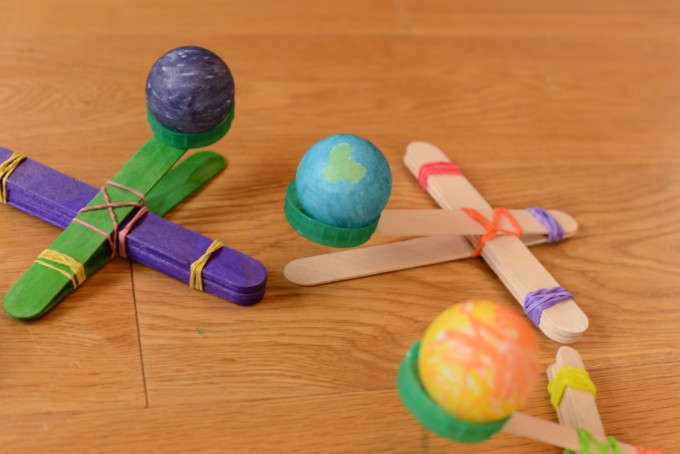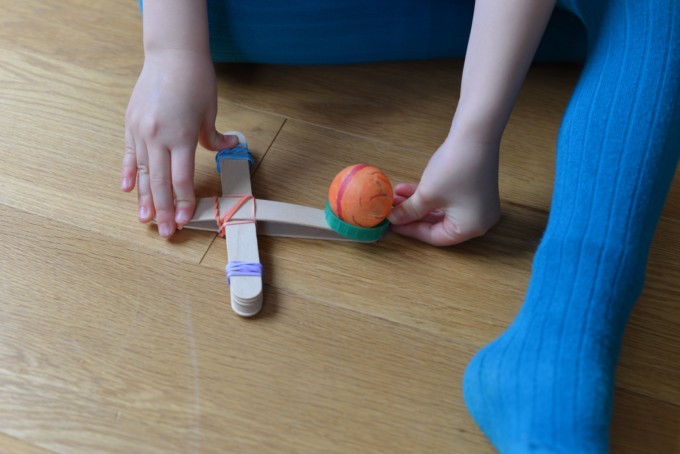These popsicle stick catapults are very easy to make and provide hours of fun as well as being a brilliant engineering and design project. I've done them before using a space theme and turned the table tennis balls into planets or asteroids but there are so many different catapult designs and themes to choose from, so you can be as creative as you want!
This project is also great for a maths based activity if children record how far different size/weights of balls travel.Maybe they could even conduct some fair testing and discover how the shape of different objects affects how far the catapult can throw them?
Popsicle catapults are very easy to make. Each one takes only a couple of minutes to build once you get the hang of it.

WHAT YOU NEED FOR A POPSICLE STICK CATAPULT
- Wide popsicle sticks/ lolly sticks
- Elastic bands
- Table tennis balls or other items to test
- Double sided tape or hot glue
- Milk bottle top or the head of a plastic spoon
- Tape measure – optional
How to make your catapult:
- Start with about 7 popsicle sticks and place them on top of each other. Twist an elastic band around each end to hold them in place.
- Place another stick above and one below the stack of 7 so they make a cross shape. There should be more lolly stick on the end you want to use for the milk top.
- Tie an elastic band around the middle of the cross.
- Twist another elastic band around the bottom of two sticks as you can see in the photo.
- Attach a milk bottle top using double sided tape or strong glue.
- Experiment with your table tennis balls.

POPSICLE STICK CATAPULT INVESTIGATION IDEAS – REMEMBER TO ONLY CHANGE ONE VARIABLE AT A TIME
What happens if you add more or less lollypop sticks to the central core of the catapult?
What happens if your catapult end is shorter?
Does a heavier ball travel further?
How far can you get a ball to travel?
What happens if you make the ball heavier?
***Remember! Send any pictures to the school office under the heading: Re: Mr Wilson - Homemade Science Pictures (along with your child's name and class)
Have Fun!

No comments:
Post a Comment